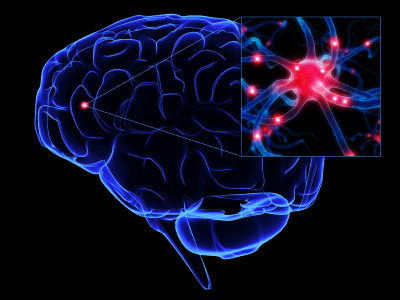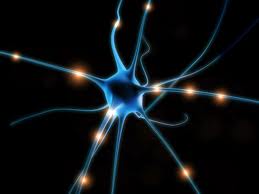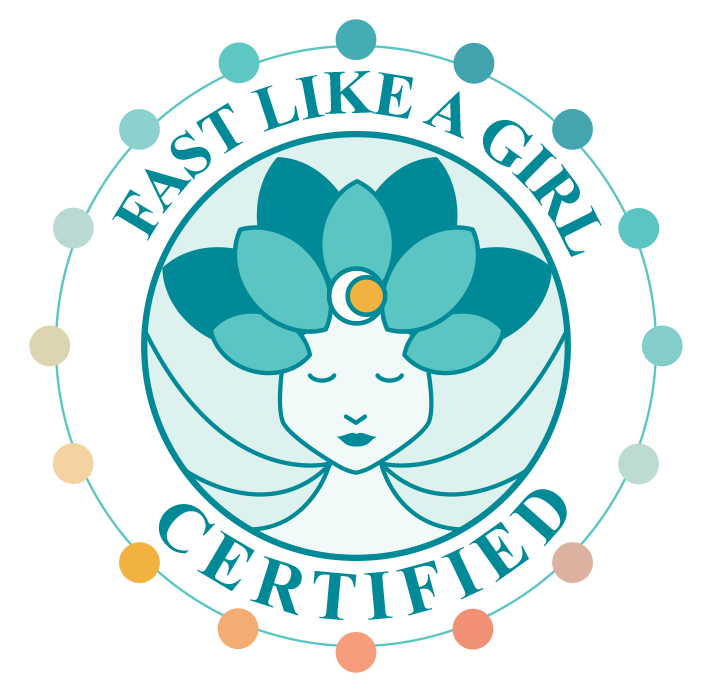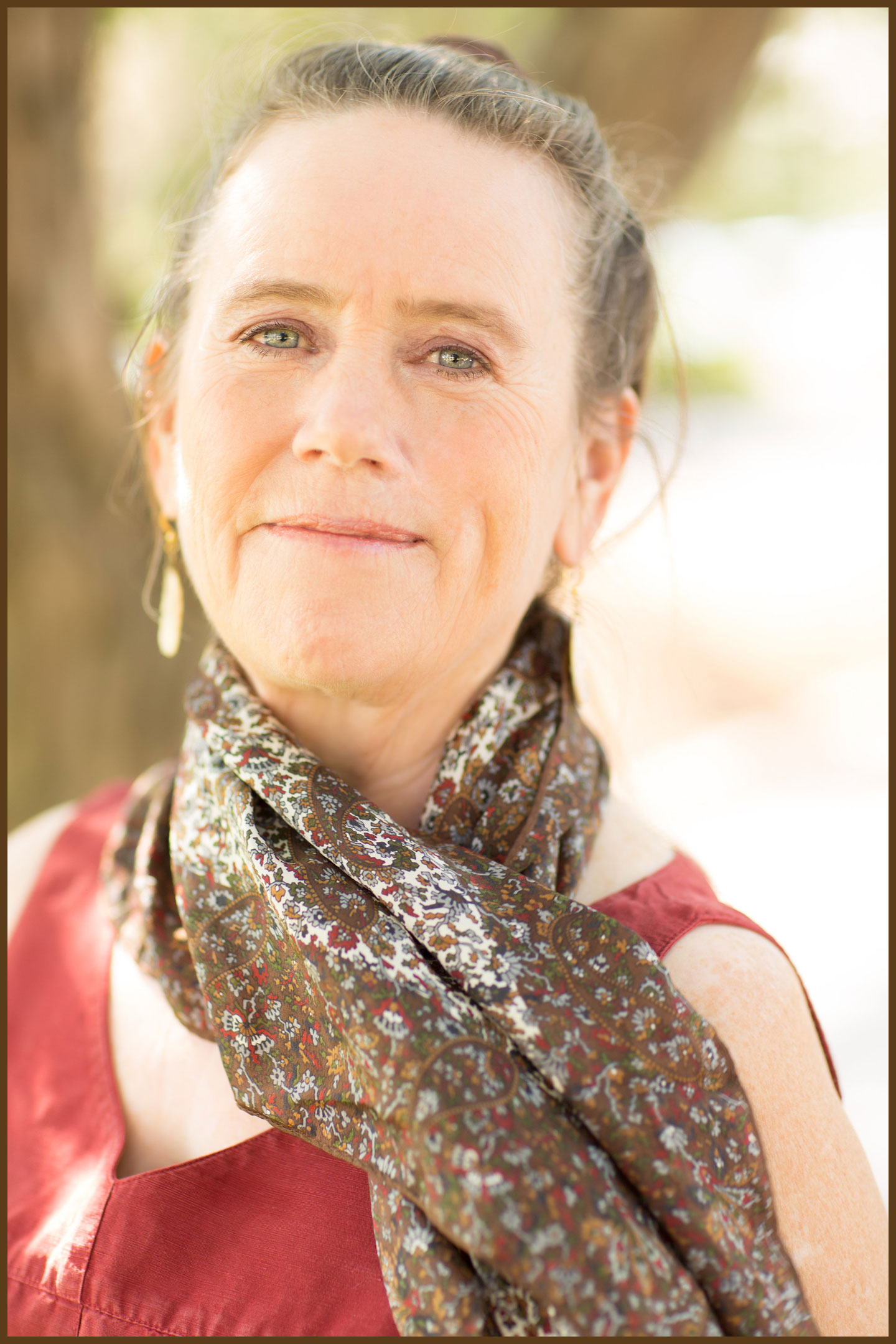Cultivating self-awareness by moving the mind inward; plus, a description of the “molecules of emotion” and their ties to consciousness and neuroscience
As printed in NDNR (Naturopathic Doctors News & Review) June 2008 / Mind-Body Medicine issue
‘Life isn’t about how to survive the storm, but how to dance in the rain.’ – Anonymous
Riding on a motorscooter, we wound through the parched hills of Eucalyptus and scrub trees under a summer sun, approaching the harbor town from our hotel. On Patmos Island, Greece, nothing could be more perfect – except perhaps for the motorist creeping along just ahead, slowing us down! In a disgusted tone, the driver of the motorscooter commented that the motorist in front of us put on his brakes even though he was only crawling along! I laughed and said, “Yeah, I hear thoughts like that when I drive through Jerome back home.”
Wait a minute! How unusual. Why wasn’t frustration ruining my sunny day?
Actually, I often see such a non-reactive response in myself, and more and more in those around me. It comes about when cultivating self-awareness, an ongoing attention to our inner state. Freud called this “evenly hovering attention,” which takes in whatever passes through the awareness with impartiality as an interested yet non-reactive witness. In this self-observing awareness we investigate experience itself, including our emotions. Observing the dance of the mind is the beginning of losing the binds of slavery to the emotional mind.
John Mayer, a co-formulator of the theory of emotional intelligence, explains more about this non-reactive, non-judgmental attention to inner states. He finds that typical thoughts of emotional awareness can include “I shouldn’t feel this way”; “I’m thinking good things to cheer up”; and the fleeting thought “Don’t think about it” in reaction to something upsetting. But maintaining the spirit of curious interest and non-reactive witnessing puts even these thoughts and directives in perspective. It is the relationship to our thoughts and feelings that matters – not the thoughts and feelings themselves. Refusing to be a slave to the chatter in the mind is the beginning of mental, emotional and physical health – in fact, experiencing “heaven on earth.”
Key to this experience is using a vehicle for the mind to gently ride inward. We are very much conditioned to seek outside ourselves to fix things, figure them out and analyze what is going on. But by using reliable techniques to move the mind inward, we become familiar with the peace that “passes all understanding,” the silence between the thoughts; the experience that remains when there is no more bondage to thoughts and feelings. I practice and teach The Ishayas’ Ascension attitudes as that reliable inward-moving vehicle. And upon hearing my response on that sunny day in Greece, you can see that I continued to experience the perfection of heaven on earth.
Looking for emotions in the brain
For years, neuroscientists searched for the structures, mechanisms, and receptors in the brain to account for emotions. Joseph LeDoux has surveyed his investigations in this area since the 1970s in the book The Emotional Brain – The Mysterious Underpinnings of Emotional Life. As well, this book is a history of trends in psychology, from introspection to behaviorism to cognitive science. While the book is an interesting read, neuroscience and psychology have little to do with the process I experienced. Yet, neuroscience has led to an understanding of physiology that may gain us insight into experiences such as the one I related.
Enter Candice Pert’s research, showing that peptides, dubbed “molecules of emotion,” are the biochemical links between consciousness, mind and body. She believes that there may be one kind of peptide specific to each emotion. She and her colleagues discovered that these molecules of emotion and the cellular receptors activated by them are not just localized to the brain, but are evident throughout the body. In fact, they link together to form a comprehensive system of communication among all systems. She demonstrated in her research lab a network of intercellular communication coordinated by these molecules of emotions which she calls the “psychosomatic network.” Dr. Pert considers the brain as just one nodal point of entry into this network, along with others such as sensory organs. She showed that beyond the brain, awareness is a property of the whole organism.
Dr. Pert proposes that consciousness is in every cell of the physical body, in the matter and activity of cellular complexes of receptors and the molecules that activate them. The activity of these molecules creates an electrical charge and continually generates a current to keep us awake, alert and conscious. Molecules of emotion are also molecules of consciousness; in fact, emotion is the bridge linking the material and immaterial realms. She explains it this way: “Just like the simultaneous particle and wave properties of light, the molecules of emotion go both ways. At the same time, they’re physical substances that you can see and weigh on a gel in the laboratory, ones that vibrate with an electrical charge in the living animal; and they’re a kind of wave between people that conveys information. They’re both physical and psychological, linking brain to body in one vast network of communication to coordinate the entire bodymind.”
Dr. Eva Mezy at the National Institutes of Health (NIH) has shown unequivocally that stem cells as a matter of course move through the blood as immune-like cells and become neurons in the brain, all guided by chemotaxis from the molecules of emotion. The bottom line is that we can learn and grow, change our mind and create a new experience of reality from moment to moment as our brain remodels with new cells.
Dr. Eric Kandel at Columbia University College of Physicians and Surgeons has shown that memory is also at the level of the receptor. The activity of cellular binding throughout the body can impact neuronal circuitry, influencing memory and thinking. He says that the emotions that a person is able to experience can bring a recollection to the surface of that person’s mind. If feelings are suppressed, however, they can bury that same memory far below awareness. It will then affect perceptions, decisions, behavior and health unconsciously. Buried painful emotions make up what is known as core emotional trauma. When the light of awareness is shone on it, choice is possible, a function of the prefrontal cortex. That choice can allow a person to reintegrate a disowned part of him or herself and let go of traumatic patterns, allowing healing.
For Physical Healing Look to Emotional Healing
Dr. Pert believes that we crave returning to the place of our most intense core emotional traumas over and over again in order to heal them. I see this in my patients and students, as well. Major trauma and emotional upset underlie illness, according to Dr. Ryke Geerd Hamer.
“I searched for cancer in the cell and I have found it in the form of a wrong coding in the brain,” he said. In studies involving 15,000 cases, he found that cancer started with “an extremely brutal shock, a dramatic and acute conflict, experienced in loneliness and sensed by the patient as the most serious he has ever known.” The experience of Dr. M. Ted Morter, Jr. shows the same for other chronic degenerative diseases, the variety of which depends on the individual’s particular lifestyle and genetic makeup. Psychic isolation is a state of mind and emotion. It is perceived rather than physical isolation, so it possible to suffer deprivation in a land of plenty. This feeling of isolation is severe, brought on by feeling disconnected with people – both ourselves and others. By stepping back and seeing the dance of the mind, there is hope of healing the trauma, because it is possible to heal the underlying perception.
Emotions and Altered States
Emotions can trigger altered states of consciousness, each with different memories, behaviors, postures and even physical processes. In witness, examine the cases of multiple personality disorders in which one personality can be allergic or diabetic, and another personality of the same physical body is not. Therefore, emotions play a powerful role in who we are, affecting our identity from moment to moment. They coordinate how our memory has an impact on our current physiology.
It is not a coincidence that receptors for the bliss molecules – morphine and endorphins – are located in the greatest concentration in the human frontal cortex. This is the highest command post of the brain, highly developed in humans. This area of the brain may play a role in how we orchestrate our choices. Dr. Pert concludes: “We have thus been hardwired to experience the pleasure of bliss, a bodymind state of unity and resonance with a loved one or the divine.”
In my experience, we are not only set up to experience this state, but it can be our default state. This is because when the light of self-awareness is brought to all emotions, the experience becomes one of only love and bliss. By practicing watching the dance of the mind and knowing that place of peace by habituating those pathways to the frontal cortex, the balance is shifted to the highly bliss-oriented receptors. It all goes back to the activity of cellular binding throughout the body impacting neuronal circuitry, influencing memory and thinking, and affecting perceptions, decisions, behavior, and health.. There is no memory of any other emotion in the state of bliss. Anyone can see how that would affect their perceptions, decisions and behavior.
I would go so far as to say that it is our birthright to experience bliss while productively functioning in the world. In fact, I experience this state of consciousness as a fountainhead of creativity leading to an ease of taking action in the world. This is how I push the “easy” button. Living this way is also known as living by intuition. It can be achieved by training ourselves to direct our attention inward and gaining an interested awareness to what goes through the mind. This leads to knowing that space in which the mind is dancing, metaphorically, in a sky where the sun is shining or rain is falling. The common denominator is the sky, and focusing awareness on the sky instead of the sun or the rain is to get to know the sky. Only then is the experience one of peace, which I characterize as relaxed bliss.
Back to Patmos
It was my last day of vacation on Patmos Island. As usual, I rose before the sun to take a walk before the heat made it uncomfortable. Climbing a hill alone, curiously aware of the thoughts and feelings running through my mind, I noticed all the things that were ending and was aware that I would be home and in my usual routine soon.Greece was such an exotic, yet familiar, place, and I grew close to my companions over these two weeks. A list of everything that I was leaving paraded through my awareness. The leisure to spend extended time with closed-eyes focused inward, exploring consciousness; swimming in the Aegean tasting salt on my lips; spending time with old friends and making new ones from all over the globe; eating delicious home-cooked Mediterranean food, Greek yogurt and ice cream; relaxing with the Brits drinking tea and biscuits; the ever-present backdrop of the sea; ahhhhhhhh . . .
A familiar feeling crept over me. I remembered that I used to label that feeling as sadness, with a sense of loss and brooding melancholy, but I chose not to attach that label to it. In fact, I was aware of it without any naming of it. Without denying that feeling, I filled my awareness with the peace that is left when all dialogue about evaluating what parades through my awareness is dropped. What I discovered instead was a growing all-encompassing love, love for the exceptional opportunity to experience all this on Patmos, love for my companions, love for this way of approaching things, love for my life exactly as it is. I experienced that the familiar feeling was actually love, the substance of the universe, not the conditioned love we are taught to expect. I experienced this in an authentic way, not denying the original label, overpowering it, or replacing the “sad” feeling. The only awareness I had was the raw realization that love is all there is – at all times, in all experiences, and in the least expected places. That was not the first time my awareness was filled in that way, and it continues to be a familiar experience.
Lest you think that I became an ungrounded bliss-ninny spouting Beatles lyrics, I will relate what happened next. As I was watching my awareness, I next noticed that there was something on my “to do” agenda on Patmos that had not happened. Certainly, I had few expectations upon arriving for the vacation, and incredibly, one important expectation did come to pass. But this one agenda item seemed hugely important at this moment, bringing up every other memory of when it was not accomplished. The memories and thoughts about them linked one to another in a huge freight train. I had thoughts about letting it go, and the train continued. I sidestepped it, and it was still right there. Suddenly, my awareness maneuvered 90 degrees to simply observe this whole train, and in that split second, the whole train of thoughts, feelings and memories disappeared without a trace. I do remember hearing, “Ah, this is what has kept me from my peace” as a comment on the experience, and watched that go, too. As I continued watching, not a trace or remnant relating to it reappeared. Only absolute peace remained. And not a bit of that particular train has resurfaced since.
Can you imagine living a life where nothing outside of you, or even things rattling inside your mind, affects your peace? In such a life, nothing on the outside makes you happier, either. In terms of the metaphor, neither the sun nor the rain affects the sky being the sky. Yet the sky is rich with sunrises and sunsets, rain and snow, wind and dust. It is all part of what we appreciate as the sky. We tend to live in a world ruled by our thoughts and emotions, those things moving through the sky of our awareness. Real peace comes in cultivating self-aware observations. This leads to emotional health which, in turn, gives a sound basis for vibrant physical health.
References:
Goleman, Daniel, Emotional Intelligence, 1995, Bantam Books,New York,NY
LeDoux, The Emotional Brain, The Mysterious Underpinnings of Emotional Life, 1996, Touchstone,New York,NY
Lipton, Bruce, Ph.D., The Biology of Belief, unleashing the power of consciousness, matter & miracles, 2005,Mountain ofLove,Santa Rosa,CA
Morter, Dr. M. Ted, Dynamic Health – Using your own beliefs, thoughts and memory to create a Healthy Body, Revised1997, B.E.S.T. Research, Inc,Rogers,AR
Pert, Candace B, Ph.D., Everything You Need to Know to Feel Go(o)d, 2006, Hay House, Inc,Carlsbad,CA
Pert, Candace B, Ph.D., Molecules of Emotion – Why You Feel the Way You Feel, 1997,Scribner,New York, NY
Ramachandran, V.S., MD, Ph.D., A Brief Tour of Human Consciousness, From Imposter Poodles to Purple Numbers, 2004, PI Press,New York,NY
Ramachandran, V.S., MD, Ph.D., Phantoms in the Brain, Probing the Mysteries of the Human Mind, 1998, William Morrow,New York,NY
Case Studies
Note: Experiences like these are common only when one becomes familiar with the inner experiences enough to distinguish the movements within the mind from the infinite eternal basis of being. This can easily be learned using a tool to move the mind inward, observing the dance and making a commitment to rest in that ground of being.
Case Study 1 Mr. D, 27
“I spent a lot of the time feeling like I was suffocating, and I frequently felt overwhelmed with suffering that didn’t seem to be connected to any physical condition, emotions, or thoughts that I was aware of. An ER doctor and a naturopath both considered this to be “panic attacks” and “generalized anxiety.” I had spent several weeks doing everything my naturopath recommended: taking certain supplements, exercising, eating healthy, Ascending [with The Ishayas’ Ascension] regularly, sleeping enough, etc.
“I distinctly remember the moment it happened. I was standing by the kitchen table, feeling that internal anguish that seems to have no cause, and I thought to myself, ‘this is more suffering than I can bear.’ I had at this point spent a day or two practicing being very aware and curious about the goings-on of my mind, so this thought really stood out to me. And I chose not to believe it.
“Since then I have experienced very little suffering. The physical condition of suffering or feeling like I am suffocating does still happen sometimes, but I now find it quite easy to just witness it and it doesn’t last long. This is a remarkable change, because these are some very intense feelings that feel life-threatening and were very overwhelming for a month or so.”
Case Study 2 Mr. P, 32
“Growing up I always felt sensitivity and tension as if everything was always too much for me to handle. The first med I took was [methylphenidate]. When I was 21, I had been on anti-anxiety medication for a while, then learned to Ascend [with The Ishayas’ Ascension]. The results were amazing. I still experienced all the same emotions and the ups and downs, but something subtle and peaceful was becoming more evident underneath all the mind chatter and emotions.
“At an Ascension retreat, the anxiety came up again. I saw the temptation to identify with it as my special anxiety problem. Then I was thinking about the past, talking to myself about how I have experienced this for my whole life and it has been very traumatic. Projecting to the future, I said to my self, ‘I am never going to get rid of this, anxiety is going to be here forever, when is it going to leave,’ etc. The thing is, I saw it; before there was an unconscious habit of identifying with this energy. Besides, I had proof that it was a problem because it was in my family and I had a whole bunch of stories about it running in my mind.
“Then I decided to watch it without labeling it or following the thoughts about the past or future. What I perceived before as anxiety suddenly became bliss and an intense rush of joy. I discovered that the same energy that my mind had determined was anxiety was actually bliss. A lot of bliss. Actually, the bliss was in the same proportion as the intense anxiety because it was simply energy moving though my nervous system. The discovery was that the only reason why I ever experienced any anxiety was because this bliss moved through a limited filter of my mind with all the beliefs, judgments, and concepts that I accepted as real.”














